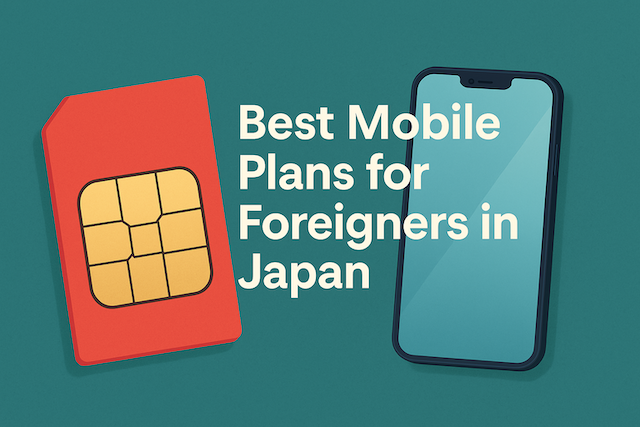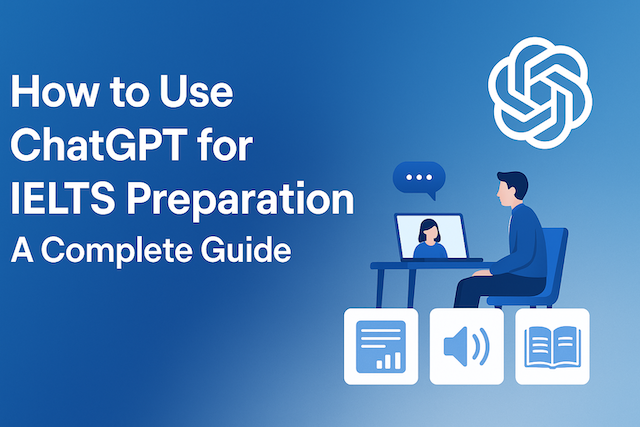Best Mobile Plans for Foreigners in Japan

Contents
- Best Mobile Plans for Foreigners in Japan
- 1. Mobile Market in Japan: An Overview
- 2. Who This Guide Is For
- 3. What to Look for in a Mobile Plan
- 4. Best Options for Short-Term Visitors (Tourists)
- 5. Best Mobile Plans for Mid-to-Long-Term Residents
- 6. Best Plans for Digital Nomads and Freelancers
- 7. Contract vs. No Contract: What’s Safer?
- 8. Using Your Foreign Phone in Japan
- 9. How to Get a SIM or eSIM
- 10. Voice Calls in Japan: Do You Need Them?
- 11. Can You Keep Your Number When Switching Plans?
- 12. Hidden Fees to Watch Out For
- 13. Recommended Plans by Use Case
- 14. Tips for Staying Connected Smoothly
- 15. Final Thoughts
- Frequently Asked Questions
- Can foreigners get a Japanese SIM card?
- Which mobile carrier is best for foreigners?
- Can I use my foreign phone in Japan?
- Do I need a Japanese address to sign up?
- Is eSIM available in Japan?
- Do I need a My Number card to get a SIM?
- How much does a mobile plan cost in Japan?
- What if I only need data, not calls?
- Can I keep my number when changing plans?
- Are there hidden fees in Japanese mobile plans?
- Can I cancel my plan anytime?
- Can I buy a SIM card at the airport?
- What is the difference between MVNO and major carriers?
- Do mobile plans in Japan include unlimited data?
- Which apps are popular for communication in Japan?
Best Mobile Plans for Foreigners in Japan
A Complete Guide to Staying Connected While Living or Traveling in Japan
Japan is known for its cutting-edge technology, but for many foreigners, getting a mobile phone plan in Japan can feel anything but futuristic. The language barrier, complex contract systems, and unfamiliar providers make choosing a plan overwhelming—especially for short-term residents, students, digital nomads, or long-term expats.
This guide will walk you through everything you need to know: from the types of plans available, to the best mobile providers for foreigners, SIM vs. eSIM options, and key tips to avoid common traps. Whether you’re here for a month or a lifetime, this article will help you find the best plan to stay connected.
1. Mobile Market in Japan: An Overview
Japan’s mobile market is dominated by three major carriers:
-
NTT Docomo
-
SoftBank
-
au by KDDI
These are known as the “Big Three,” offering nationwide coverage and high-quality service—but often at a high price and with complex contract terms.
Then there are MVNOs (Mobile Virtual Network Operators)—smaller providers that lease networks from the big carriers. These include:
-
Rakuten Mobile (now a major carrier itself)
-
LINEMO
-
IIJmio
-
povo
-
b-mobile
-
Sakura Mobile
-
Mobal
These MVNOs often offer better flexibility, cheaper rates, and English-language support.
2. Who This Guide Is For
This article is designed for:
-
Short-term travelers (1 week to 3 months)
-
Students studying in Japan
-
Long-term foreign residents and expats
-
Digital nomads and freelancers
-
Business travelers or interns
-
Tourists looking for easy data SIMs
3. What to Look for in a Mobile Plan
When choosing a mobile plan in Japan, consider:
| Feature | Importance for Foreigners |
|---|---|
| Contract Flexibility | High (avoid 2-year contracts) |
| English Support | Essential for non-Japanese speakers |
| Data Allowance | Moderate to high for work/streaming |
| Airport Pickup | Helpful for short stays |
| No Activation Fee | Avoid hidden charges |
| Easy Cancellation | Especially for short-term users |
| SIM/eSIM Options | Flexibility for newer phones |
4. Best Options for Short-Term Visitors (Tourists)
✅ Sakura Mobile
-
Plans: SIM and Wi-Fi rental (7–90 days)
-
English support: Full
-
Network: Docomo
-
Pros: Airport pickup, no Japanese required
-
Price: ¥3,980 for 15 days (4GB/day plan)
✅ Japan Wireless
-
Plans: Pocket Wi-Fi & data SIM
-
Good for: Groups and families
-
Pros: Rent without address, return by mail
-
Cons: No voice calls
✅ Mobal Japan SIM
-
Plan: Tourist SIM with voice and data
-
No contract: Yes
-
Shipping: Airport or hotel delivery
-
English support: Excellent
Best for: Tourists who want phone + data with English service
5. Best Mobile Plans for Mid-to-Long-Term Residents
✅ Rakuten Mobile
-
Plan: Unlimited data (in Rakuten area), free calls with Rakuten Link
-
Price: ¥0–¥3,278/month (based on usage)
-
Contract: No lock-in
-
English site: Available
-
Note: Limited coverage in rural areas
✅ LINEMO
-
Parent: SoftBank
-
Plans:
-
Mini (3GB): ¥990
-
Standard (20GB): ¥2,728
-
-
Contract: None
-
App: Manage plan via LINE app
-
Support: Basic English available
✅ IIJmio
-
Plans: From ¥850/month (2GB)
-
Data-only or voice SIMs
-
SIM delivery: Yes
-
Notes: Japanese form required but manageable
6. Best Plans for Digital Nomads and Freelancers
✅ povo 2.0 (by au)
-
Unique model: Base plan is ¥0/month, and you buy “top-up” data (e.g., 20GB for ¥2,700)
-
Highly customizable
-
eSIM available
-
Great for: Digital nomads who move around or use Wi-Fi mostly
✅ Mobal Monthly SIM
-
Long-term plan
-
Includes calls, texts, and data
-
No Japanese address needed
-
English support: Full
-
Cancel anytime: Yes
✅ Airalo eSIM
-
Type: eSIM data-only
-
For unlocked phones only
-
Great for: Tech-savvy users with no time to pick up a SIM
-
Country-specific and regional plans available
7. Contract vs. No Contract: What’s Safer?
| Contract Type | Pros | Cons |
|---|---|---|
| Contract (Big 3) | Strong network, phone bundling | Requires long stay, cancellation penalties, Japanese required |
| No Contract (MVNO, eSIM) | Flexible, easier for foreigners | May have slower data speeds during peak hours |
For most foreigners, no-contract MVNO or eSIMs are ideal.
8. Using Your Foreign Phone in Japan
✅ Requirements:
-
Your phone must be unlocked
-
Compatible with Japanese LTE/4G bands (especially Band 1, 3, 19)
eSIM Compatibility:
-
iPhone XS or later
-
Google Pixel 4 and newer
-
Samsung Galaxy S20 and up
Tip: Always check your device specs before choosing an eSIM.
9. How to Get a SIM or eSIM
At the Airport
-
Narita, Haneda, and Kansai airports have SIM/eSIM vending machines
-
Brands: Sakura Mobile, Mobal, JAL ABC
Order Online
-
English sites (e.g., Mobal, Rakuten) allow delivery to your hotel, home, or convenience store
In Stores
-
Bic Camera, Yodobashi Camera offer SIM plans with ID and residence card
10. Voice Calls in Japan: Do You Need Them?
Most Japanese mobile plans still include phone numbers and SMS, but many foreigners rely on:
-
WhatsApp
-
LINE (popular in Japan)
-
Zoom / Skype
-
Email / Slack
Unless you need a local number for work, a data-only SIM is sufficient.
11. Can You Keep Your Number When Switching Plans?
Yes—this is called MNP (Mobile Number Portability). However:
-
Requires MNP reservation from your old provider
-
Some carriers charge a transfer fee
-
Not available for tourist SIMs or short-term plans
12. Hidden Fees to Watch Out For
| Fee Type | Description |
|---|---|
| Activation fee | Usually ¥3,000 for new contracts |
| SIM re-issue fee | If you lose your SIM card |
| Cancellation fee | Still exists on some long-term contracts |
| Data overage | Charges for exceeding your monthly limit |
Always read the fine print—even English-friendly sites may bury fees in the terms.
13. Recommended Plans by Use Case
| Use Case | Best Plan |
|---|---|
| 1-week Tourist | Sakura Mobile SIM / Pocket WiFi |
| Student (6+ months) | LINEMO 20GB or Rakuten |
| Freelancer / Nomad | povo 2.0 + eSIM |
| Business Traveler | Mobal SIM with calls |
| Remote Worker | Rakuten + home Wi-Fi |
| Family | Pocket WiFi rental or family MVNO bundle |
14. Tips for Staying Connected Smoothly
-
Use public Wi-Fi cautiously—install a VPN for security
-
Always carry a backup power bank
-
Keep your passport when picking up SIMs in stores
-
Enable data-saving mode in apps like Instagram, TikTok
-
If in rural areas, choose Docomo-based providers
15. Final Thoughts
The Japanese mobile scene may seem overwhelming at first, but there’s never been a better time to find an affordable, foreigner-friendly mobile plan. Whether you’re here for a few days or a few years, there’s a plan that fits your needs and budget.
Focus on flexibility, English support, and avoiding contracts if you’re not staying long. MVNOs and eSIM services have made it easier than ever to get online in Japan—no Japanese required.
Happy calling, streaming, and roaming!
Frequently Asked Questions
Can foreigners get a Japanese SIM card?
Yes, foreigners with a valid visa and residence card can get a SIM card in Japan. Tourists can also get prepaid SIMs or rent pocket Wi-Fi devices.
Which mobile carrier is best for foreigners?
Sakura Mobile, Mobal, Rakuten Mobile, and LINEMO are popular choices due to English support and flexible plans.
Can I use my foreign phone in Japan?
Yes, as long as your phone is unlocked and supports Japanese LTE bands (especially Band 1, 3, 8, 18, 19).
Do I need a Japanese address to sign up?
Some providers require a Japanese address, but others like Mobal or Sakura Mobile allow passport-only registration.
Is eSIM available in Japan?
Yes, many providers like povo, Rakuten, and Airalo offer eSIM options for compatible smartphones.
Do I need a My Number card to get a SIM?
No, it’s not always required. Some banks or large carriers might ask for it, but many mobile services only need your residence card and passport.
How much does a mobile plan cost in Japan?
Prices range from ¥990/month (3GB with LINEMO) to ¥3,000+ for unlimited data with major carriers.
What if I only need data, not calls?
Data-only SIMs are widely available and usually cheaper. Ideal for tourists or digital nomads using apps like WhatsApp or LINE.
Can I keep my number when changing plans?
Yes. Japan offers MNP (Mobile Number Portability), but you’ll need to request a code from your old provider and may pay a small fee.
Some providers charge activation or cancellation fees. Always read the terms before signing up.
Can I cancel my plan anytime?
Yes, if you’re on a no-contract plan. Traditional 2-year contracts often include cancellation penalties.
Can I buy a SIM card at the airport?
Yes. Major airports like Narita and Haneda have SIM vending machines and rental counters with English support.
What is the difference between MVNO and major carriers?
MVNOs use the networks of major carriers but offer cheaper, no-contract plans—often with slower speeds during peak times.
Do mobile plans in Japan include unlimited data?
Some do, like Rakuten Mobile or SoftBank’s premium plans. Most MVNOs have capped data and throttle speeds after limits.
Which apps are popular for communication in Japan?
LINE is the most popular messaging app in Japan. WhatsApp, Zoom, and Messenger are also commonly used by foreigners.




